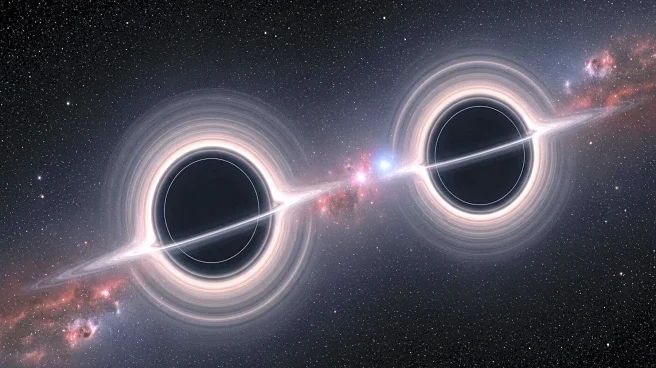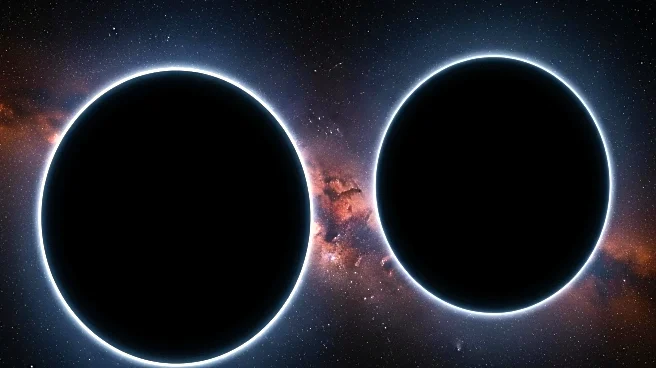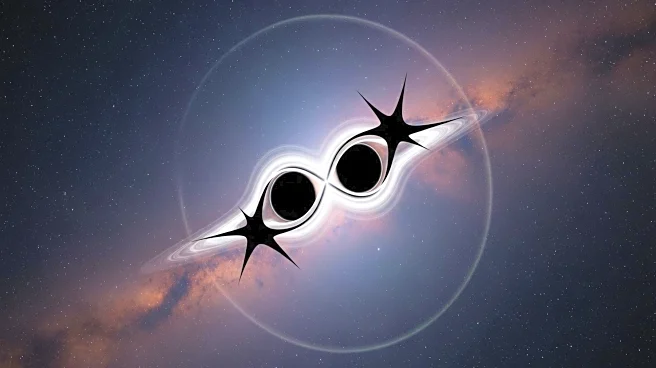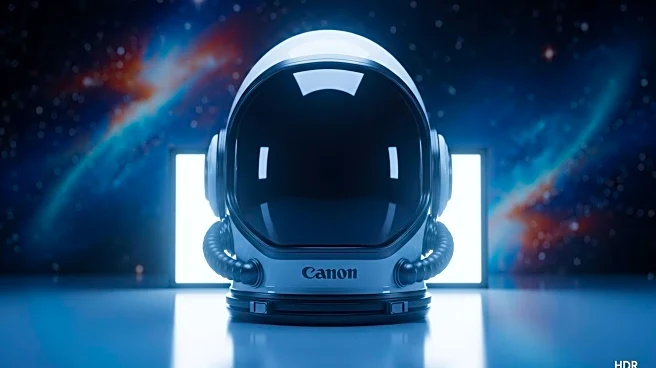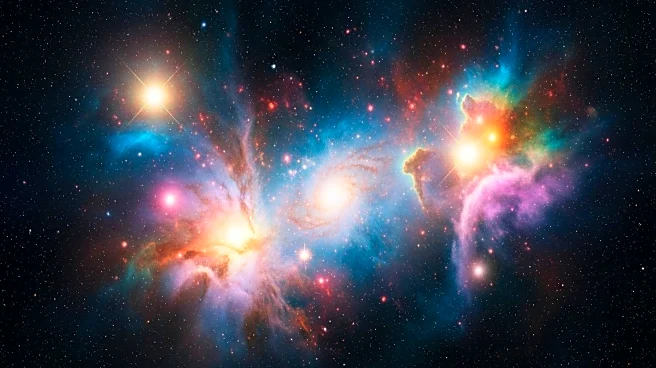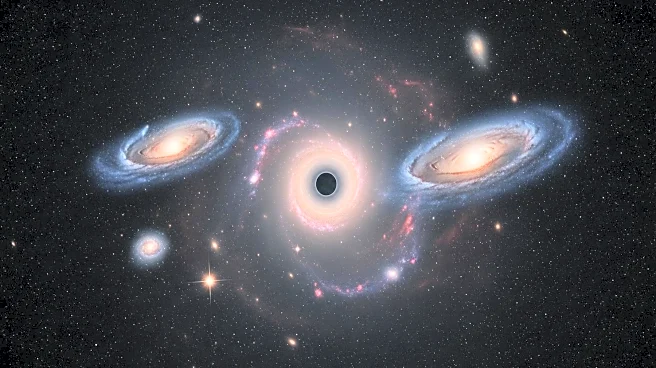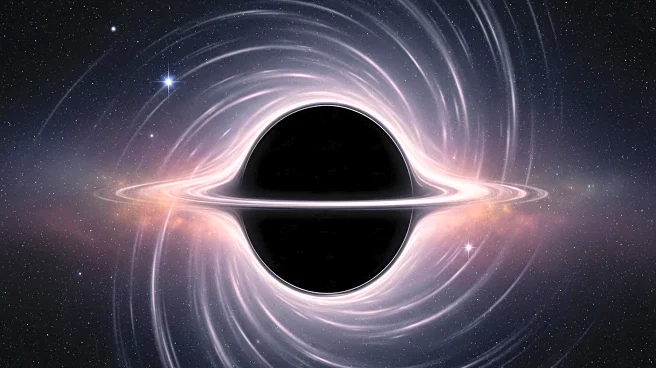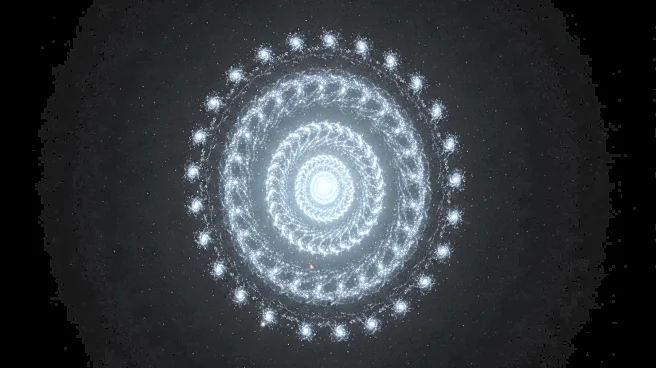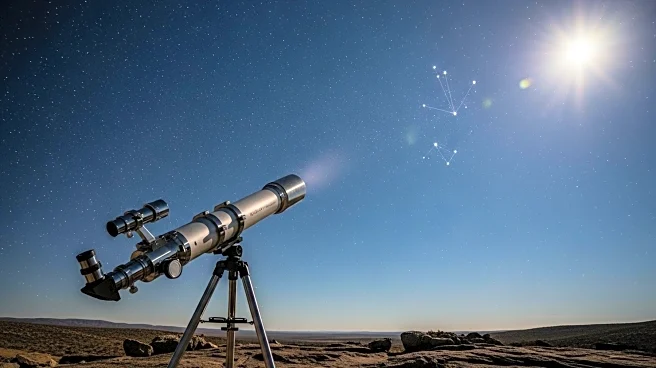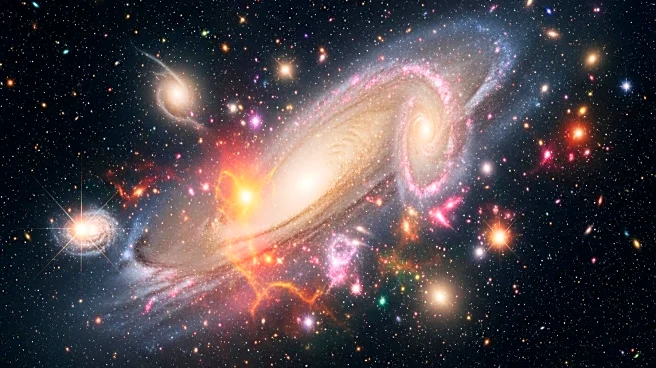What's Happening?
Astronomers have successfully captured a radio image showing two black holes orbiting each other for the first time. This observation was made at the center of a quasar named OJ287, which is known for its brightness due to the supermassive black hole at its core consuming surrounding cosmic gas and dust. The discovery confirms the existence of black hole pairs, a phenomenon previously theorized but not visually documented. The image was obtained using a system that included the RadioAstron satellite, which provided high-resolution imaging capabilities. The research, led by Mauri Valtonen from the University of Turku, was published in The Astrophysical Journal.
Why It's Important?
This breakthrough in imaging black hole pairs has significant implications for astrophysics, as it provides direct evidence of binary black hole systems. Such systems are crucial for understanding the dynamics of galaxies and the role of black holes in cosmic evolution. The ability to image these pairs can lead to new insights into gravitational waves and the behavior of matter under extreme gravitational forces. This discovery also opens up possibilities for further research into the formation and interaction of black holes, potentially impacting theories on galaxy formation and the distribution of matter in the universe.
What's Next?
Future research will likely focus on observing more black hole pairs to understand their formation and evolution. The discovery of a new type of jet emanating from the smaller black hole in OJ287 suggests that there are more complex dynamics at play, which could be studied in detail. Astronomers may use similar high-resolution imaging techniques to explore other quasars and galaxies, potentially uncovering more binary black hole systems. This could lead to advancements in gravitational wave detection and a deeper understanding of the universe's structure.
Beyond the Headlines
The discovery highlights the importance of international collaboration in astronomy, as the imaging involved researchers from multiple countries and institutions. It also underscores the value of radio telescopes and satellite systems in advancing our knowledge of the cosmos. The ability to capture such detailed images of distant cosmic phenomena demonstrates the technological advancements in observational astronomy, paving the way for future discoveries.

